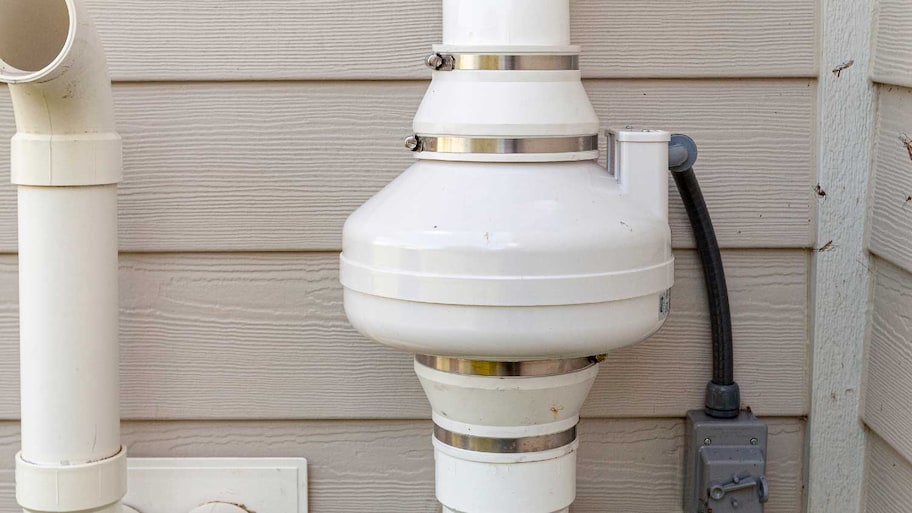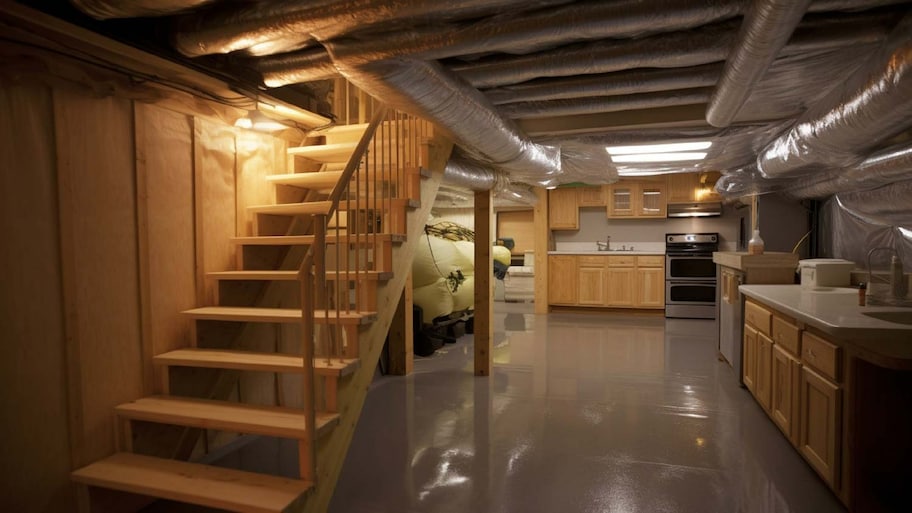How Does a Radon Mitigation System Work? And How Do You Keep Yourself Safe?
Put radon worries in your rear-view mirror


Highlights
Long-term exposure to radon can lead to lung cancer.
Installing a radon mitigation system can reduce radon concentrations in the air.
The system pulls gas from underneath your home, and expels it out the attic.
You almost certainly need a pro to install the radon mitigation system.
An average radon mitigation system costs $1,000 to install.
When you are trying to enjoy a relaxing evening at home after a long day, the last thing you want to worry about is problems with your property–like termites, roof leaks, or unsafe air. Fortunately, it’s easy to eliminate one problem—radon—from your list of worries by deploying a radon mitigation system. How does a radon mitigation system work? It draws air from the ground, which may include concentrated radon gas, and expels it into the surrounding air outside of the home, keeping the air inside your home safer.
What Is Radon and Why Is It Dangerous?
Radon is a radioactive gas that is naturally occurring throughout the United States. As uranium in the soil breaks down, it creates radon gas. It becomes especially dangerous when your home or office building has uranium in the soil below it, allowing radon gas to seep through your foundation and into the home’s atmosphere.
It doesn’t really matter if you have an older home or a newer home. Because radon comes from the soil, it could seep into any kind of home, unless the builder specifically constructed the foundation to be radon resistant.
Once it’s indoors, radon circulates. Concentrations build up slowly to expose your family. With long-term exposure to radon, you could suffer lung cancer. The Environmental Protection Agency (EPA) estimates about 21,000 Americans die annually from lung cancer related to radon exposure, making it the second-highest cause of lung cancer deaths.
Radon gas does not have a color or odor, so you cannot know whether you may have a problem without testing. Should tests show that you have a problem, you can reduce the level of radon that is seeping into your home or office building through mitigation.
How Does Radon Mitigation Work?
Radon mitigation attempts to reduce the concentration of radon gas inside a building or home. Because radon particles are dangerous to breathe, the mitigation system tries to limit human exposure to these particles.
How does a radon mitigation system work? It uses a pipe and fan to pull air from the dirt underneath the home’s foundation or in crawl spaces, expelling it into the surrounding air for dissipation. The design of the system should keep the venting away from any doors and windows.
Types of Radon Mitigation Systems
It’s important to match up the system design with the design of the foundation of your home.
Crawl space: Inside a crawl space, the installer will cover the soil with plastic. The vent pipe then goes through the plastic to pull out soil gas.
Drain tile: The vent pipe in the mitigation system goes through the foundation’s drain tile to reach the ground, and to pull out soil gas.
Sub-slab: The vent pipe goes directly underneath the foundation of the building through the concrete slab, pulling out soil gas.
Sump pump: If you already have a sump pump pit installed, it’s possible the installer can use this pit to pull out soil gas.
The lower end of the vent pipe pulls the soil gas out of a suction pit that’s dug in a location that matches the type of mitigation system design in use.
All systems then send the soil gas outside the home near the roof through the upper end of the vent pipe. Systems use powered fans to extract the soil gas. These fans often exist in an attic or garage, as you cannot install them in a living space.
Does a Radon Mitigation System Actually Work?

Because radon gas is heavier than the normal atmosphere—by 7.5 times, according to the EPA—some people believe that a radon mitigation system does not work. They believe the radon would not dissipate in the atmosphere, falling back to the ground.
However, these systems are able to dissipate the radon gas. The force of the fan keeps radon from collecting in high concentration levels near the home. Even though radon is heavier than air, it moves readily on forced air currents, allowing the system to move it across great distances.
According to the EPA, for a radon mitigation system to work properly, it should deliver a radon level of less than 4 pCi/L (picocuries per liter) inside the home. A local radon inspection company should be able to measure your radon levels after the installation of a system, determining whether it’s working properly.
Should you install a radon mitigation system and find that it is not moving the radon particles properly, it’s rarely because the design of the system is poor. Far more often, a problem with a mitigation system occurs because of an improper installation.
How to Install a Radon Mitigation System
The process of installing a radon mitigation system is usually a job best left to the professionals. In fact, many local and state laws require you to hire a licensed professional to do the work, rather than allowing you to do the job yourself.
Not only does the installer need to put the system in place, but the installer also may need to be able to hard wire the fan into your electrical system. The installer may need to put the lower end of the vent pipe through your foundation and the upper end through your roof safely, so this is not a job for a novice.
As part of the process for installing the system in a home where radon levels are high, the local radon mitigation company can probably seal any gaps in your foundation. The professional also knows exactly what type of system to use to match the design of your home.
What Does It Cost to Install a Radon Mitigation System?
The average radon mitigation system cost is about $1,000, including installation. Should you need significant repairs to the foundation to cut off the ability of the radon gas to seep into your home, you could pay anywhere from $1,500 to $15,000.
The fan in the radon mitigation system runs on electrical power. However, the cost to run the fan should be less than $100 per year.

